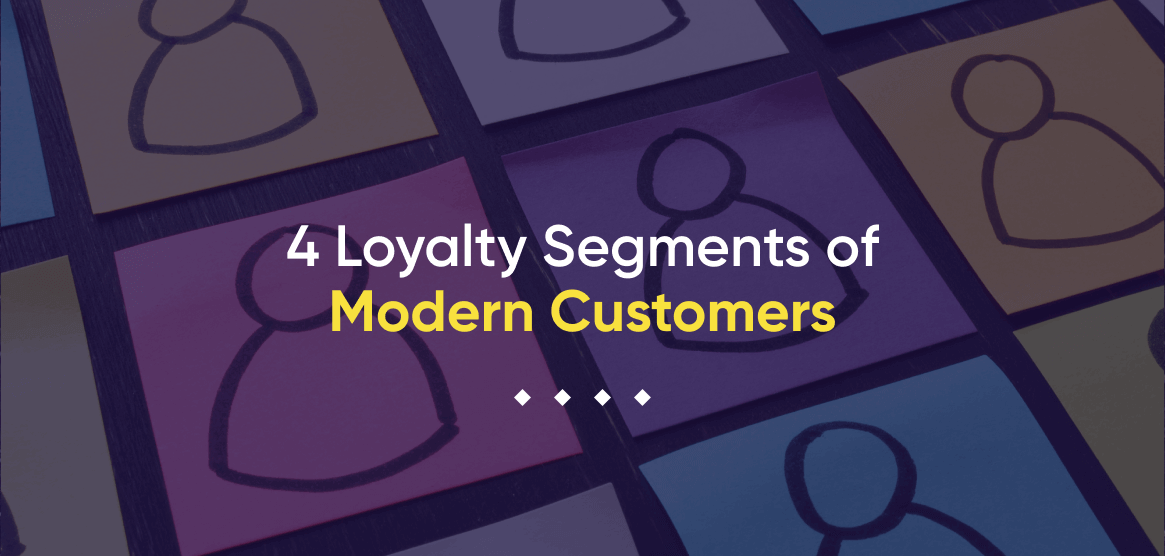While the notion of 1:1 personalization is enchanting, scalable loyalty strategies are built around sizeable loyalty segments that share common needs and hold potential for the organization. The fun, but the maddening challenge with loyalty segmentation is that the options seem endless, and there is no single right answer. The challenge is definitely worth it because most marketers using advanced personalization based on segmentation achieve a 200% increase in ROI vs a one-size-fits-all approach.
Finding the Right Segmentation Framework
As an initial step, here’s a strategic segmentation framework, based on the LoyaltyLevers Benefits Framework, built around three key loyalty factors:
- Engagement: Factors, in this case, include program engagement, benefit usage, communication engagement, and website visitation
- Loyalty Sentiment: This is the level of emotional loyalty and overall brand affinity measured through surveys, typically among a sampling of members
- Behavioral Loyalty: The value for each member, measured by frequency of visits, spend, margin and spending growth over time
Loyalty Segment 1: Games Players
Some members love the thrill of the chase, collecting as many points and benefits as possible by participating in a wide range of activities and exploring all the possible reward opportunities. As a result, they are highly engaged with all the communication channels. Many check the website or the dedicated loyalty app daily to find awards availabilities. So, for this group, gamification is a big draw. Games Players also love to share with others, including sharing their achievements, and find even more ways to optimize their earnings. Entire forums exist for this purpose, like flyertalk, The Points Guy, and so on.
In fact, this loyalty segment may be so caught up in the chase that they don’t pay attention to brand messages at all, and as a result, don’t develop much loyalty to the brand. Games Players are notorious for optimizing the best deal and ROI for their spend, which suggests that the rewards program is buying loyalty vs building it. You’ll likely find several different sub-segments of Games Players, based on their value to the organization and their relative degrees of engagement and loyalty sentiment.
The trick is to leverage Games Players’ high engagement by introducing an ever-increasing array of Sentiment Builders that extend switching costs beyond pure monetary considerations. Sentiment Builders can be surprise-and-delight, personalized experiences, VIP treatment, cause-related tie-ins, and beyond. Of course, there are many other forms of loyalty program benefits worth exploring, too.
Loyalty Segment 2: Brand Driven
The Brand Driven segment is the polar opposite of Games Players. Their decisions are mostly influenced by brand and customer experience considerations and Brand Driven customers may have little-to-no engagement with the loyalty program. Their lives seem extremely busy, and loyalty programs may feel too complex to bother with. For many executives, this segment is a concern because it can entail significant marketing costs with little demonstrable impact.
To be successful with Brand Driven loyalty segments, simplicity is of the utmost importance – these customers have little patience for complicated earnings schemes, delayed gratification, or red tape when it comes to redemption. Seamless integration with the customer experience is the goal, and as Brand Driven members come to see how the loyalty program enhances the brand, and makes their lives even easier, they’ll engage with the program. Elements like automatic rewards generation and personalized recommendations for earning opportunities will resonate. On the other hand, generic promotions, daily emails and long lists of partner opportunities will likely fall on deaf ears.
Loyalty Segment 3: Engaged Loyals
Engaged Loyals represent the best of the best – highly engaged consumers who have developed strong brand loyalty, and likely a lot of value. Even so, experience has proven that time after time, these audiences display the highest incremental lift with each new program addition. The sky truly does seem to be the limit. So, consider creating new spending opportunities through exclusive products or experiences that cater to these customers.
Another opportunity is to turn these outstanding customers into advocates by providing opportunities and incentives to share their experiences, and perhaps selectively contribute to new reward ideas. Sharing the love with this group by creating over-the-top experiences and rewards will only fuel these efforts by building even stronger loyalty bonds and generating word of mouth.
LoyaltySegment 4: Belongers
Belongers, usually the majority of members in any loyalty program, may have joined the program out of habit, or perhaps because it was promoted well. They likely have signed up for dozens of loyalty programs yet may not remember most in the flurry of activity. Depending on the type of program, up to half of those who join may fall into the “one and done” category, never to return. It remains a puzzle to most program managers, however, it doesn’t mean that this audience is without value.
One theory is that Belongers continue to use the brand but are not providing their loyalty card. Depending on the permission obtained upon joining, there are opportunities to stitch together various data sources to identify these members’ continued activity and incentivize them to identify themselves.
Others may be potentially high-value customers who used your brand on a single occasion but remain loyal to the competition. Identifying and converting customers with that kind of potential is the holy grail! Enhancing data for these customers and developing predictive models for past converters will help you identify niche audiences for highly-targeted, valuable offers that will attract this group and pay big returns.
Loyalty Segmentation: How to Get Started
Segmentation is the culmination of an analytical foundation critical to the success of any enterprise loyalty program. LoyaltyLevers believes that segmentation is an art and a science, and while the most useful segments will vary widely from one brand to another, the key is to embrace it and continuously test and learn to determine what works best for your organization.
As for the loyalty technology capable of empowering the reward program of your dreams, Antavo offers a highly sophisticated, API-based, no-code loyalty platform. Antavo’s experts are more than happy to set up a demo or provide direct answers if you send an RFP.
In the meantime, here’s a comprehensive article and handy worksheet that will guide you through the first steps of building a captivating loyalty program concept.


